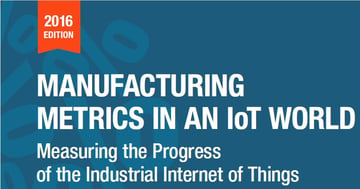 For those who are unaware, every two years here at LNS Research we engage with MESA International to conduct the “Metrics that Matter” research study – focused on identifying the most important and cutting edge trends in manufacturing; particularly on the key performance indicators (KPIs) that companies are using as well as the improvements displayed therein.
For those who are unaware, every two years here at LNS Research we engage with MESA International to conduct the “Metrics that Matter” research study – focused on identifying the most important and cutting edge trends in manufacturing; particularly on the key performance indicators (KPIs) that companies are using as well as the improvements displayed therein.
In this past iteration we placed increased focus on the role of the emerging technology landscape – the Industrial Internet of Things (IIoT), Cloud, Big Data Analytics, Mobility – in current manufacturing strategies and performance metrics. Like the previous study, there were both surprises and expected findings within. Below we’ll share five of the key takeaways from the study and a vision of where we expect to go from here.
1. The IIoT Is More than Hype – 50%+ of Respondents Increased in Education and Investigation of Projects Year over Year
Within the study one of the first questions asked around IIoT was about how the IIoT is impacting businesses today. Across the board we see positive results, with greater engagement on the part of manufacturers’ internal drivers as well as on the part of their customers. While these small upticks are good news, the biggest takeaway here is that the mass awareness and education around IIoT is at hand, as we see a dramatic decrease in the number of respondents who indicated that they don’t understand or know about IoT over the past year.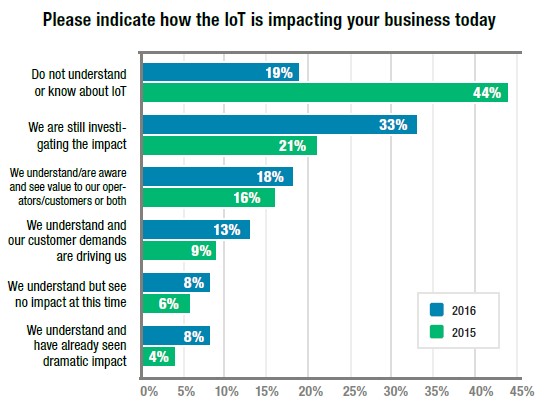
2. Two Thirds of Manufacturers Go Outside of Strict Adherence to Hierarchical Data Flow
We’ve spoken here at LNS Research about how the incremental move to more and more Manufacturing Operations Management (MOM) functionality in the Cloud may have the eventual effect of flattening the traditional ISA-95 hierarchy that’s been in place for decades. While we should reiterate that this potential development is quite a ways off, we’re beginning to see the types of software investments and planning that would be expected of this transition.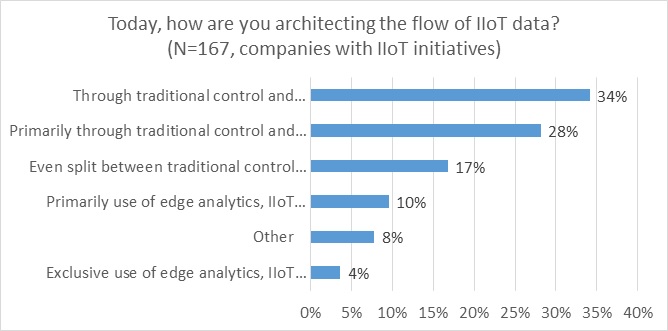
When we take a look at how organizations are architecting the flow of the IIoT data in use today, there are some interesting things taking place. Though 62% of respondents still make either exclusive or primary use of traditional control and information system architecture, up to 14% of respondents now gravitate toward edge analytics, Cloud, and IIoT gateways; with another 17% stating that both methods are used equally. We expect to see these numbers rise over the coming years as manufacturers continue to roll out IIoT implementations and develop more sophisticated analytics programs.
3. Cloud on the Rise for MOM Software
Also contributing to the gradual evolution of the ISA-95 model, manufacturers are slowly starting to embrace the Cloud for MOM functionality. On-premise deployments still dominate both the planned and currently implemented landscape, but the chart shows that manufacturers are beginning to see the benefits of lowered costs and risk, and increased speed to implement within the Cloud when considering MOM implementation. This is something we expect to see increase throughout 2016 and help enable Smart Connected Operations.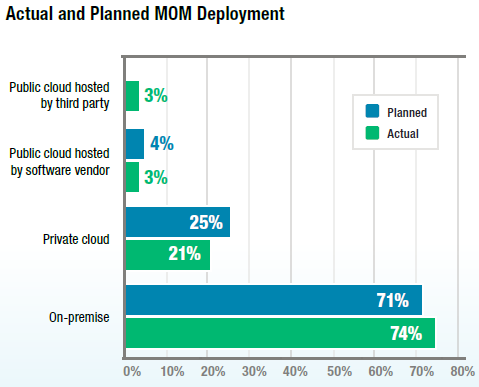
4. Improvements in Financial and Operational Metrics Outpace Macro-Economic Indicators
There were plenty of encouraging results surrounding year-over-year improvements in various financial and operational metrics in this year’s study, which represent clear evidence that quality and operational programs, like Operational Excellence (OpEx)/Lean/Six Sigma/Continuous Improvement, are continuing to help drive real and sustained manufacturing productivity gains. For example, the improvement of 10% in manufacturing is a notable achievement that implies operational improvements in efficiency and quality as well as, and these do bear out, first pass yield rose by a median of 14% and output by 15%.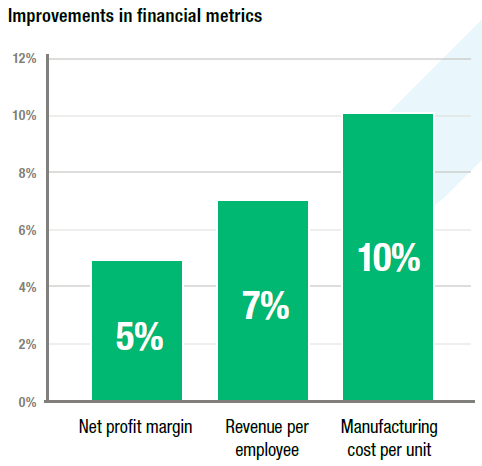
5. 86% of Industrial Companies Surveyed Don’t Have a Corporate Analytics Program
The use cases of analytics are starting to get interesting both within and outside the enterprise, including initiatives to share data outside the enterprise for improved quality and delivery with customers as well as with suppliers, and improving forecasting of production across plants and business units. However, with this being the case, we were somewhat surprised to discover that only 14% of respondents answered yes to the question, “Do you have a corporate analytics program that uses manufacturing data?” This is in part reflective of the lack of a common framework between analytics and OpEx and similar programs.
Maximize Your Metrics Strategy with the 2015-2016 Metrics that Matter eBook
For deeper insights from the Metrics that Matter Study, including the full range of operational improvements, most popular analytics uses, industry trends, as well as actionable recommendations for optimizing your metrics, be sure to click below for a free copy of the 2015-2016 Metrics that Matter eBook.